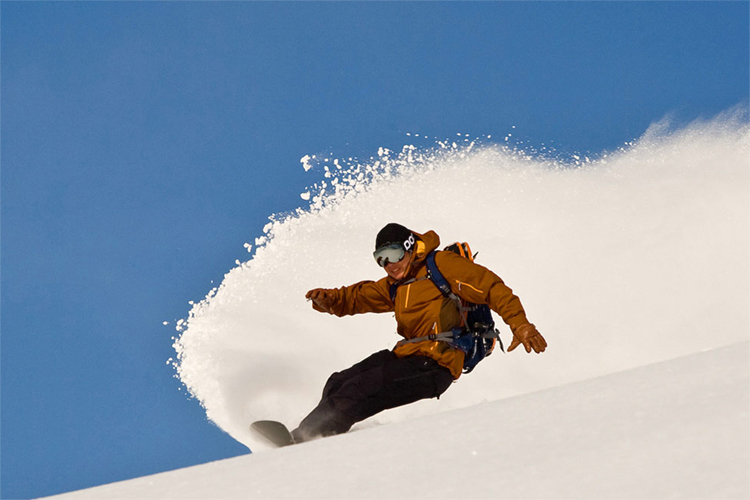Snow surfing, also known as powder surfing, is an alternative genre of snowboarding that emerged on the island of Hokkaido in Japan.
The place has a rich history of craftsmanship. Local snowboarders, surfboards, and skiers started developing the noble art of snow surfing in the early 1980s.
The movement spread to Europe and North America and gained broader visibility in the 2000s.
It still involves a lot of experimentation, but the equipment required is highly efficient already.
Snow surfers ride a board shaped explicitly for the mountains that combines aspects of the surfboard, snowboard, skateboard, and even sandboard.
Some athletes even use wax to increase grip.
Unlike traditional snowboards, surf snowboards are not meant to be ridden using bindings. As a result, it is harder to keep a balance, more difficult to maneuver, and considerably slower than snowboarding.
You could say that a snow surfboard is a snowboard with a twist. Imagine a swallow-tailed board mixed with the 1965 Snurfer, and that's nearly it.
They're also made from natural materials - wood is the favorite one - but the whole concept states that each board is shaped for a certain and specific snow condition.
Snow surfboards usually feature fish, diamond or round tails, and rounded or pointy noses.
Feel the Flow
In snow surfing, the goal is not to ride fast and perform eye-catching freestyle tricks.
The snow surfer is invited to descend the mountain, work around its obstacles with style, grace, and flow, and feel every detail and texture of what lies beneath his or her feet.
Snow surfing mimics wave riding's fundamental maneuvers - bottom-turns, cut-backs, power carves, lay-back turns, and backside hacks - and transports them into the cold and white terrains without any special adaptation.
You can - and should - use your hands to slightly rotate your body, but the essence of it is to bring the joy of trimming a wave to the snow and riding powder like an ocean wave.
As they ride and slide and flow down a slope, snow surfers draw long arcs across the mountains and generate huge buckets of powder snow at each turn.
Snow surfing is not about getting from one place to another fast. On the contrary, it's all about connecting the dots in the smoothest way possible.
Although the snow surfing scene rejects direct comparisons with its relatives, in a way, the relationship between snow surfing and snowboarding is similar to the connection between longboarding and shortboard surfing.
Taro Tamai, Kenichi Miyashita, Osamu Okada, Kazushi Yamauchi, Atsushi Gomyo, Alex Yoder, Forrest Shearer, Chris Christenson, Gray Thompson, Beau Young, Nicholas Wolken, Timo Paarvala, Gerry Lopez, and his son Alex Lopez are some of the most prolific ambassadors of the snow surfing revolution.
Snow surfing is here to stay. It has never been a vague, retro movement designed by mountain hipsters.
It is a full-grown niche winter sport with a consolidated culture and equipment.
